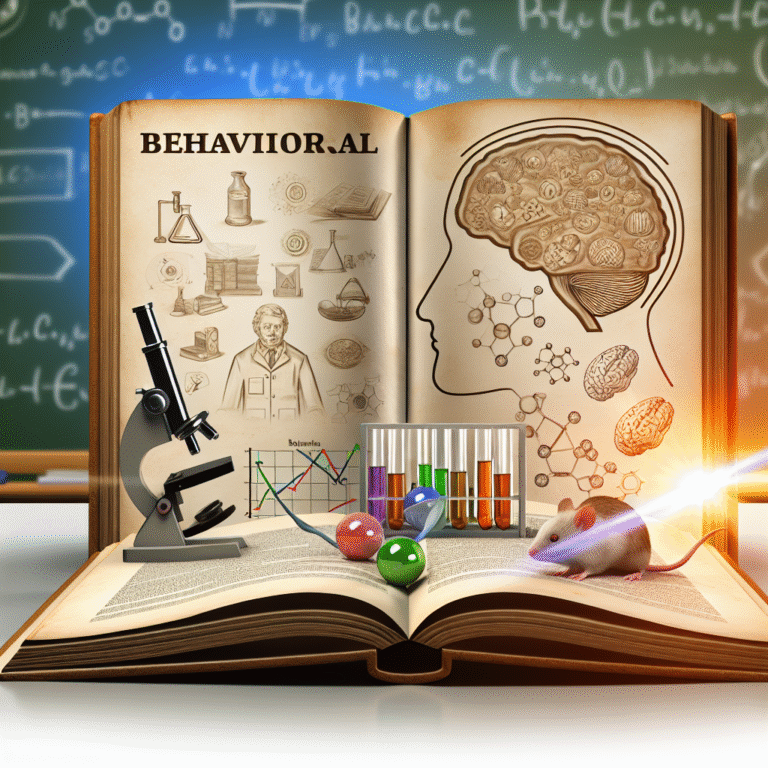The Art of Conversation: 10 Essential Tips to Enhance Communication in Your Relationship
Introduction
In a world that thrives on connection and communication, the ability to converse effectively is more crucial than ever. Whether it’s a romantic relationship, a friendship, or within families, conversational skills form the backbone of healthy interactions. If you find yourself struggling to communicate effectively with your partner, don’t worry—you’re not alone. Many couples face challenges when expressing thoughts, feelings, and desires.
Understanding The Art of Conversation: 10 Tips to Enhance Communication in Your Relationship can elevate the quality of your interactions, fostering a deeper bond and greater mutual understanding. In this article, we’ll explore actionable strategies, insightful case studies, and essential tips that will transform the way you converse in your relationship.
1. Active Listening: The Foundation of Communication
What is Active Listening?
Active listening is more than just hearing the words spoken; it’s about understanding the emotion and intent behind those words. It requires fully engaging with your partner and showing genuine interest.
Case Study: Emily and Jack
Emily and Jack found themselves in frequent arguments, often over trivial issues. They decided to work on their communication, focusing on active listening. During conversations, they would take turns speaking while the other listened without interruption. Over time, their relationship improved significantly as they felt heard and understood.
Tips for Active Listening
- Maintain Eye Contact: This shows you’re engaged and focused.
- Avoid Interrupting: Let your partner speak without interjecting your thoughts.
- Reflect Back: Summarize what you’ve heard to demonstrate understanding.
2. Non-Verbal Communication: More Than Words
The Role of Body Language
Your body language, facial expressions, and tone can convey just as much information as words. Misinterpretations often stem from mismatched verbal and non-verbal cues.
Analysis of Non-Verbal Signals
When Jess felt her partner was upset, she first misinterpreted their silence as indifference. However, when she realized her partner’s body language was one of contemplation rather than dismissal, the misunderstanding dissolved.
Tips for Effective Non-Verbal Communication
- Use Open Body Language: Relaxed posture invites engagement.
- Observe Facial Expressions: Emotions are often revealed before words.
- Match Your Tone: Ensure your tone is consistent with your message.
3. Avoiding Assumptions: Clarifying Intentions
The Dangers of Assumptions
Many arguments arise from misunderstandings due to assumptions. To foster honest dialogue, clarifying intentions is essential.
Case Study: Sara and Tom
Sara and Tom often assumed what the other was feeling. They implemented a ‘clarification’ practice where each person articulated their assumptions before discussing topics. This eliminated unnecessary conflict and deepened their emotional connection.
Tips for Reducing Assumptions
- Ask Questions: Don’t hesitate to ask for clarification if something is unclear.
- Use “I” Statements: Express your feelings instead of making accusations.
- Encourage Openness: Create a safe space for discussing feelings without judgment.
4. Timing Matters: Choosing the Right Moment
The Importance of Timing
Sometimes, the message is lost simply because of poor timing. Choosing the right moment to discuss sensitive topics can make a world of difference.
Case Study: Mia and Aaron
Mia often tried to discuss important subjects late at night when Aaron was tired. After recognizing this pattern, they designated specific times for serious conversations. This shift led to more productive discussions and fewer misunderstandings.
Tips for Choosing the Right Time
- Avoid Stressful Moments: Choose a calm, relaxed environment.
- Schedule Uninterrupted Time: If necessary, plan a specific time to talk.
- Be Mindful of Emotional States: Approach sensitive topics when both parties are emotionally ready.
5. Empathy: Walking in Your Partner’s Shoes
What is Empathy?
Empathy is the ability to understand and share the feelings of another. It’s an essential ingredient in effective communication.
Case Study: Jordan and Alex
Jordan struggled to understand why Alex felt overwhelmed. By practicing empathy—putting himself in Alex’s shoes—Jordan was able to respond supportively, rather than defensively. This not only improved their communication but also strengthened their relationship.
Tips for Cultivating Empathy
- Practice Perspective-Taking: Reflect on how you would feel in your partner’s situation.
- Validate Their Feelings: Acknowledge your partner’s emotions, even if you don’t agree.
- Be Patient: Understanding takes time; allow space for feelings to unfold.
6. Conflict Resolution: Navigating Disagreements
Understanding Conflict
Disagreements are a natural part of any relationship. How you navigate these conflicts significantly affects your connection.
Case Study: Lisa and Mark
Lisa and Mark often escalated arguments. They adopted a ‘conflict resolution’ strategy of discussing issues calmly, focusing on solutions rather than blame. Over time, this not only mitigated arguments but also increased intimacy.
Tips for Healthy Conflict Resolution
- Stay Focused on the Issue: Avoid personal attacks; address the behavior, not the person.
- Use “We” Language: Foster teamwork by addressing issues collaboratively.
- Take Breaks If Needed: If things get too heated, take a break to cool down.
7. Expressing Gratitude: The Power of Appreciation
Why Gratitude Matters
Expressing gratitude can enhance the emotional connection in relationships. It reinforces positive behavior and fosters a sense of belonging.
Case Study: Claire and Sam
Claire made it a habit to express gratitude towards Sam for even small gestures. This simple practice cultivated a more positive atmosphere in their relationship, making conversations more open and honest.
Tips for Expressing Gratitude
- Be Specific: Instead of just saying "thank you," detail what you appreciate.
- Make It a Habit: Incorporate gratitude into daily interactions.
- Celebrate Small Wins: Recognize the little things that contribute to your relationship.
8. Educate Yourself: Understanding Different Communication Styles
The Impact of Communication Styles
Every person has a unique communication style influenced by their personality, upbringing, and experiences. Recognizing these styles can enhance understanding and reduce conflict.
Analysis of Communication Styles
When Tara better understood her partner’s more reserved communication style, she learned to appreciate the thoughtfulness behind his responses rather than perceiving them as disengagement.
Tips for Acknowledging Different Styles
- Engage in Open Dialogue: Discuss your communication styles and preferences.
- Tailor Your Approach: Adapt your communication style to suit your partner’s.
- Be Patient with Differences: Recognize that not everyone communicates in the same way.
9. Use Technology Wisely: Navigating Digital Communication
The Role of Technology
In our fast-paced digital age, communication often happens through text and social media, which can lead to misunderstandings.
Case Study: Nora and Luis
Nora often misinterpreted Luis’s text messages as abrupt. After sitting down to discuss how they both felt about digital communication, they established guidelines for discussing sensitive topics in face-to-face conversations whenever possible.
Tips for Effective Digital Communication
- Emojis or GIFs: Use them to convey tone, but don’t rely solely on them for important messages.
- Avoid Ambiguity: Be clear about your intentions in written communication.
- Set Boundaries: Agree on when to disconnect from devices and focus on face-to-face conversations.
10. Continuous Growth: Embrace Learning Together
The Journey of Communication
Communication is not static; it evolves as relationships grow. Embracing learning together can enhance relational skills.
Case Study: Olivia and Kevin
Olivia and Kevin took a communication workshop together. They learned new techniques and reaffirmed their commitment to improving their conversations. This shared experience brought them closer, enriching their relationship.
Tips for Ongoing Improvement
- Participate in Workshops: Engage in activities focused on improving communication skills.
- Read Together: Explore books on effective communication.
- Reflect Regularly: Make it a habit to discuss what’s working in your communication and what isn’t.
Conclusion
Mastering The Art of Conversation: 10 Tips to Enhance Communication in Your Relationship is not just about improving dialogue; it’s about deepening your connection. By practicing active listening, recognizing non-verbal cues, clarifying intentions, choosing the right moments, and cultivating empathy, couples can enhance their interactions. Remember, continuous learning and applying these tips will foster an environment of understanding, trust, and love.
As you embark on this journey, hold onto the belief that every conversation is an opportunity to grow closer to your partner. Start today by implementing one or two tips from this guide and watch how your communication evolves!
FAQs
1. Why is communication so essential in relationships?
Communication is crucial as it strengthens emotional connections, resolves conflicts, and ensures both partners feel heard and valued.
2. How can I improve my listening skills?
To improve listening skills, practice active listening techniques such as summarizing what your partner says, avoiding interruptions, and maintaining eye contact.
3. What can I do if my partner shuts down during conversations?
Encourage openness by creating a safe atmosphere. If they feel overwhelmed, give them space and revisit the conversation later when emotions are calmer.
4. How do I address sensitive topics without hurting my partner’s feelings?
Use "I" statements to express how you feel without assigning blame. Choose the right time and setting to create open dialogue.
5. How can I make gratitude a part of my daily conversations?
Make it a habit to regularly express appreciation for your partner’s efforts. Share specific instances of gratitude, creating a positive continuous feedback loop in your relationship.
By integrating these actionable insights into your daily interactions, you’ll not only enhance communication but also enrich the overall quality of your relationship. Embrace The Art of Conversation and let the power of effective communication elevate your love life to new heights!













